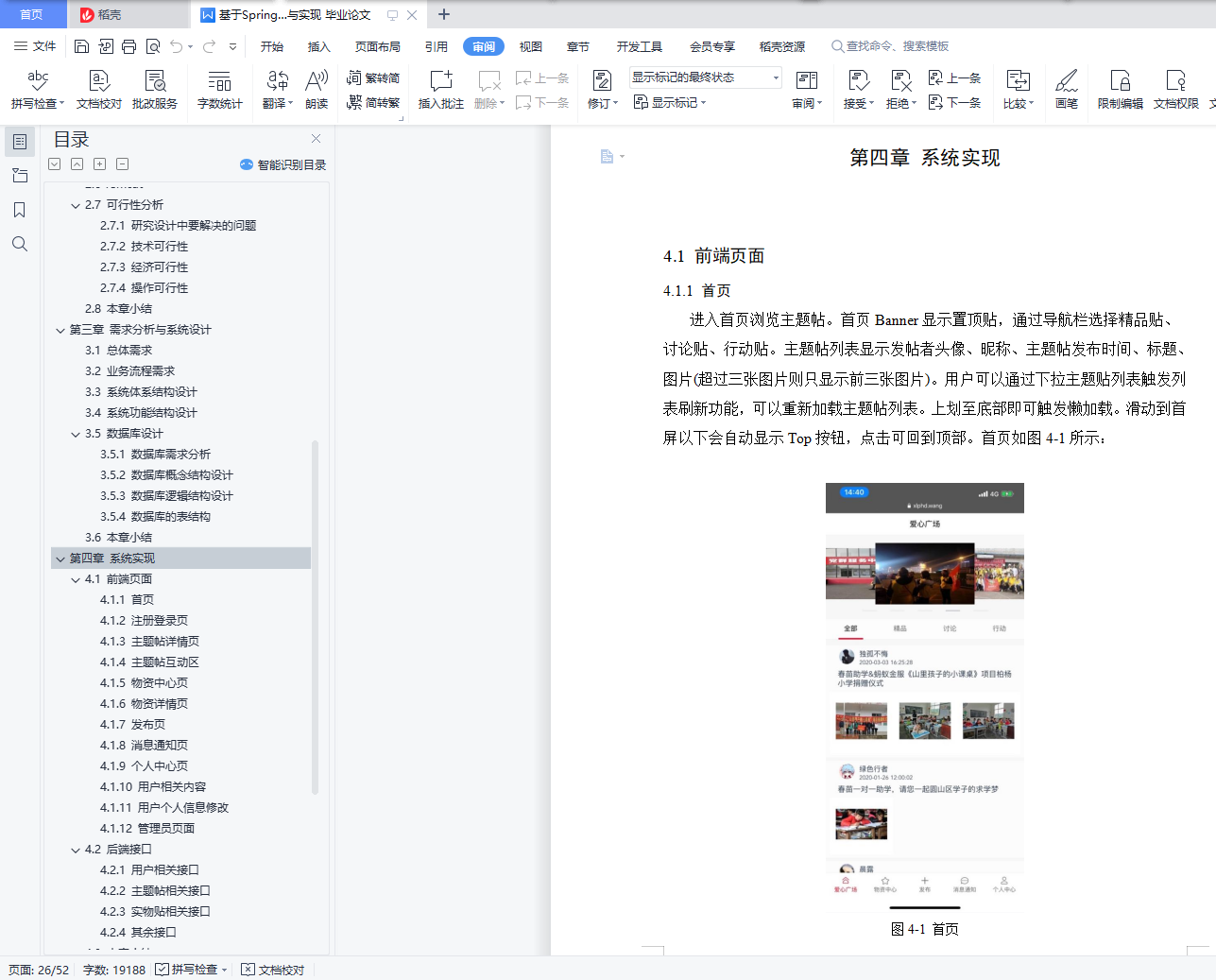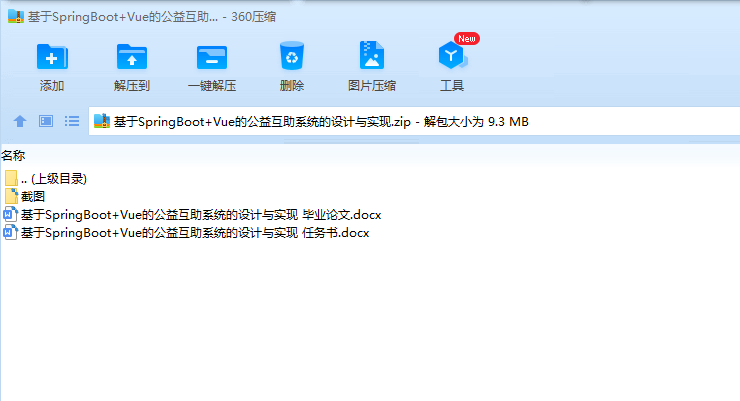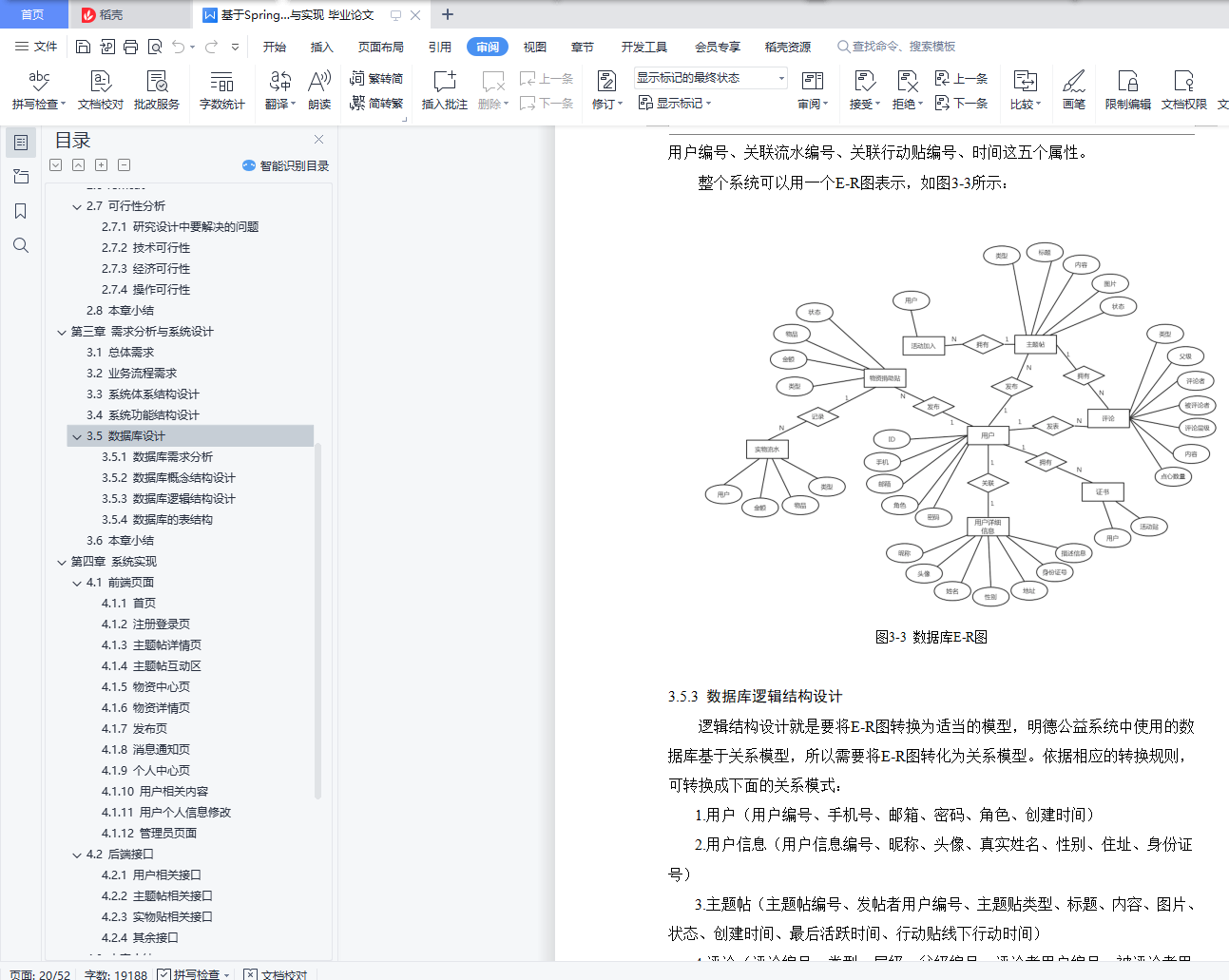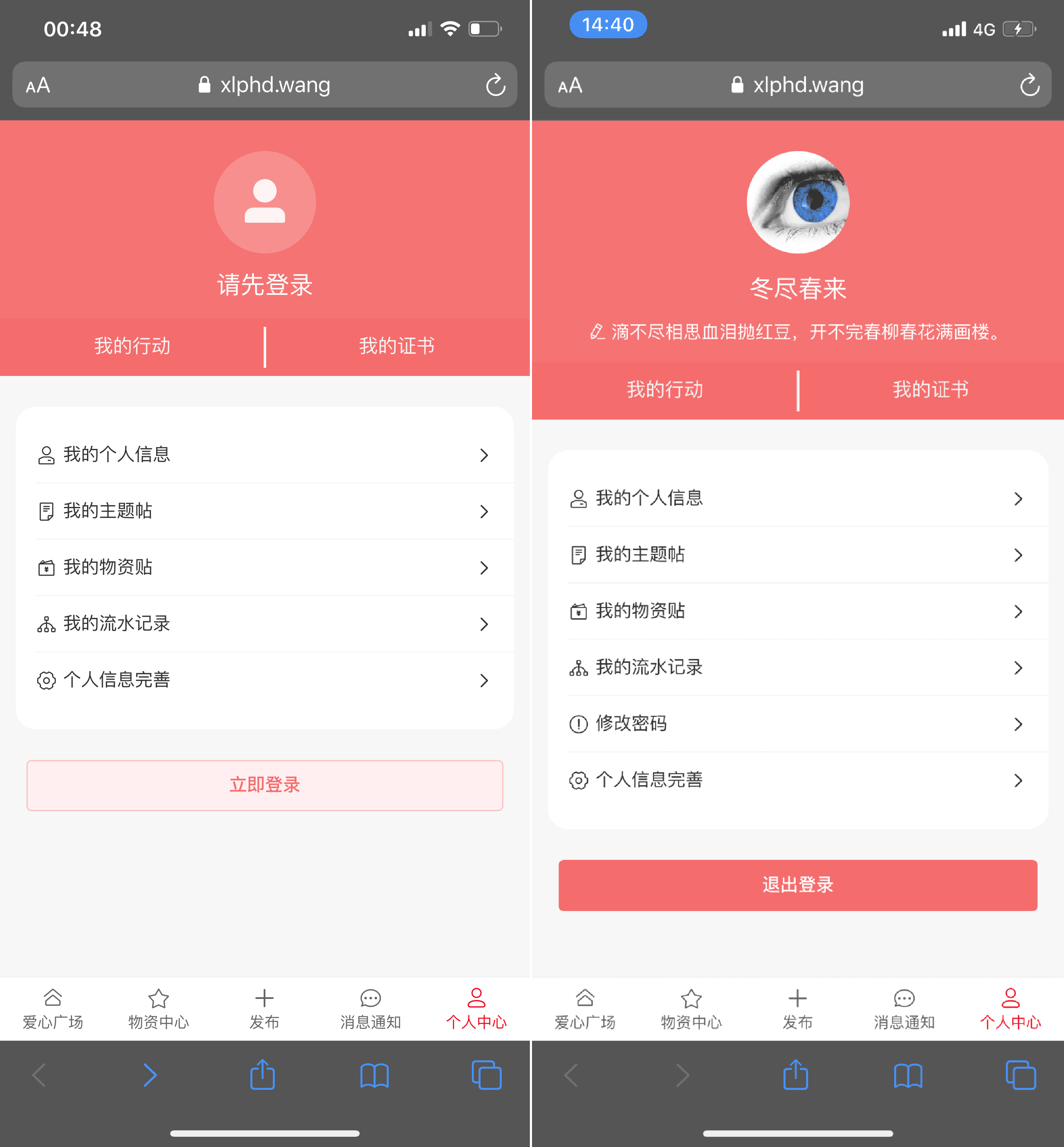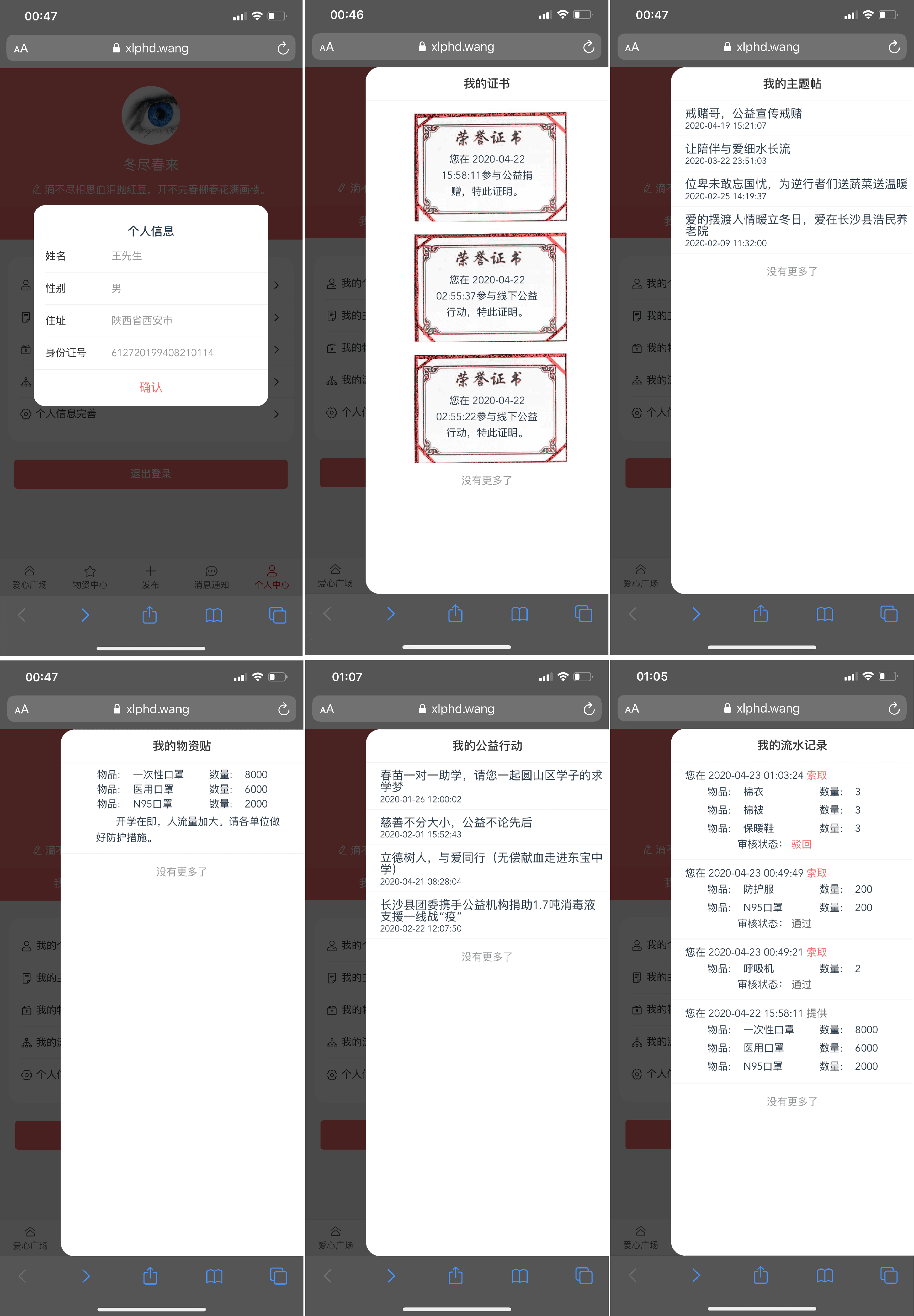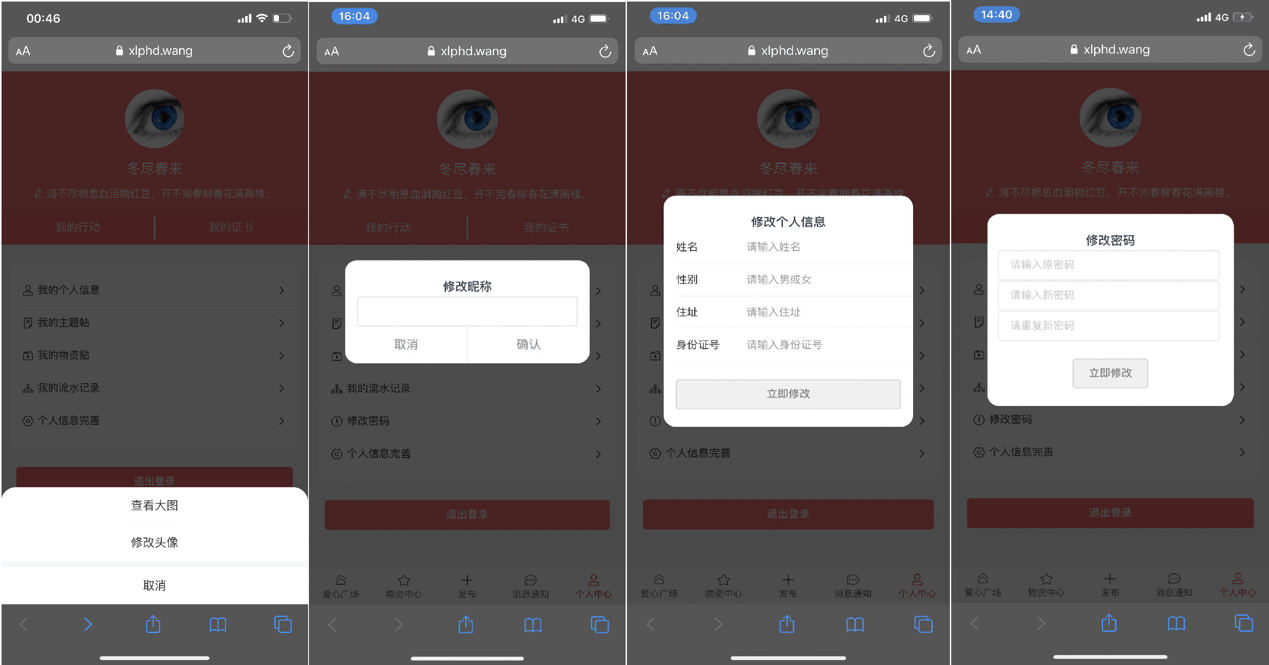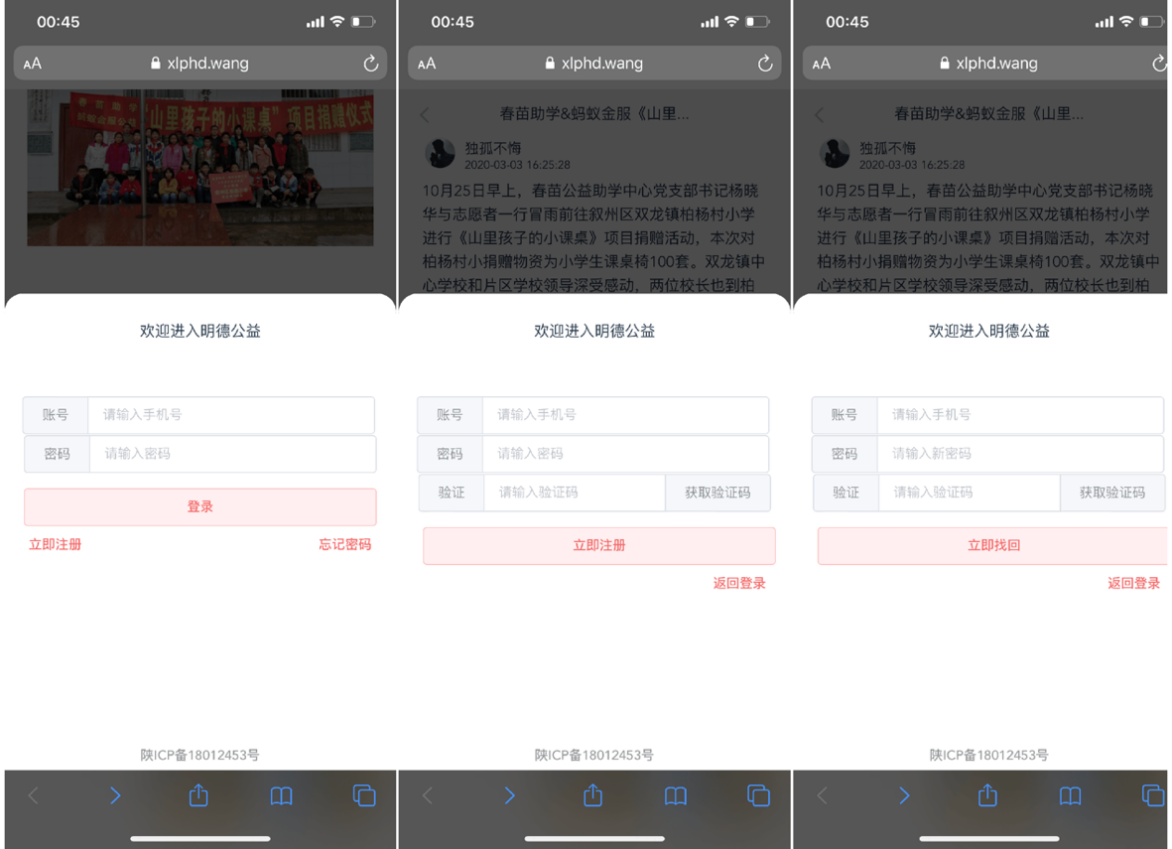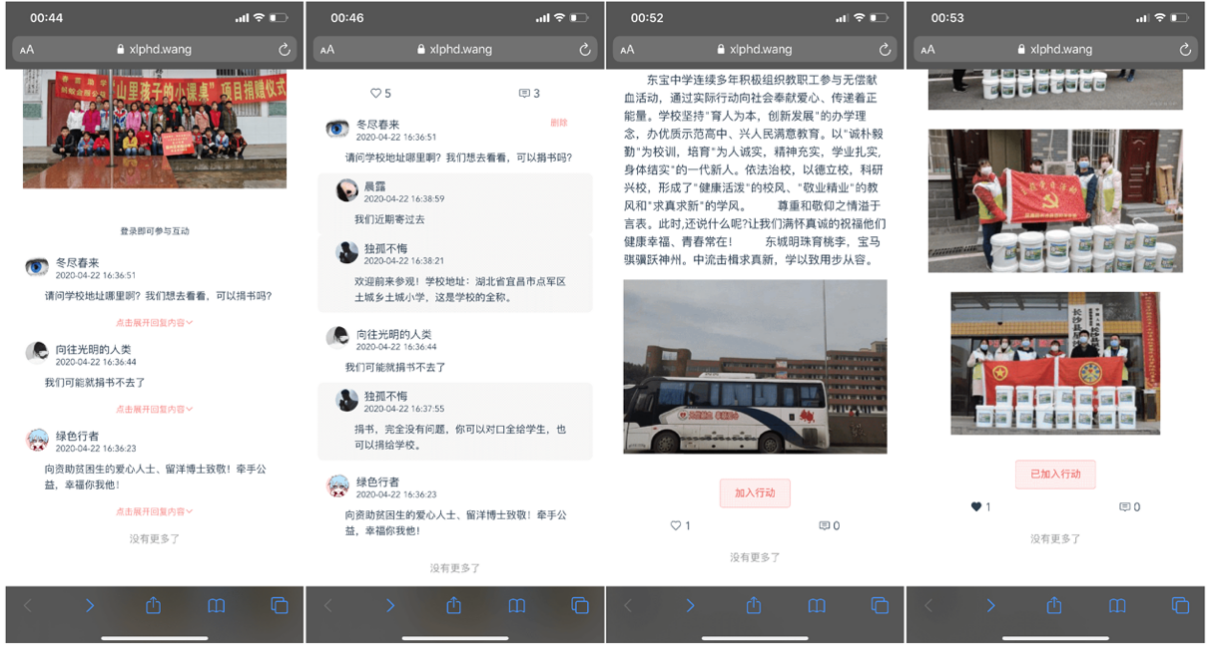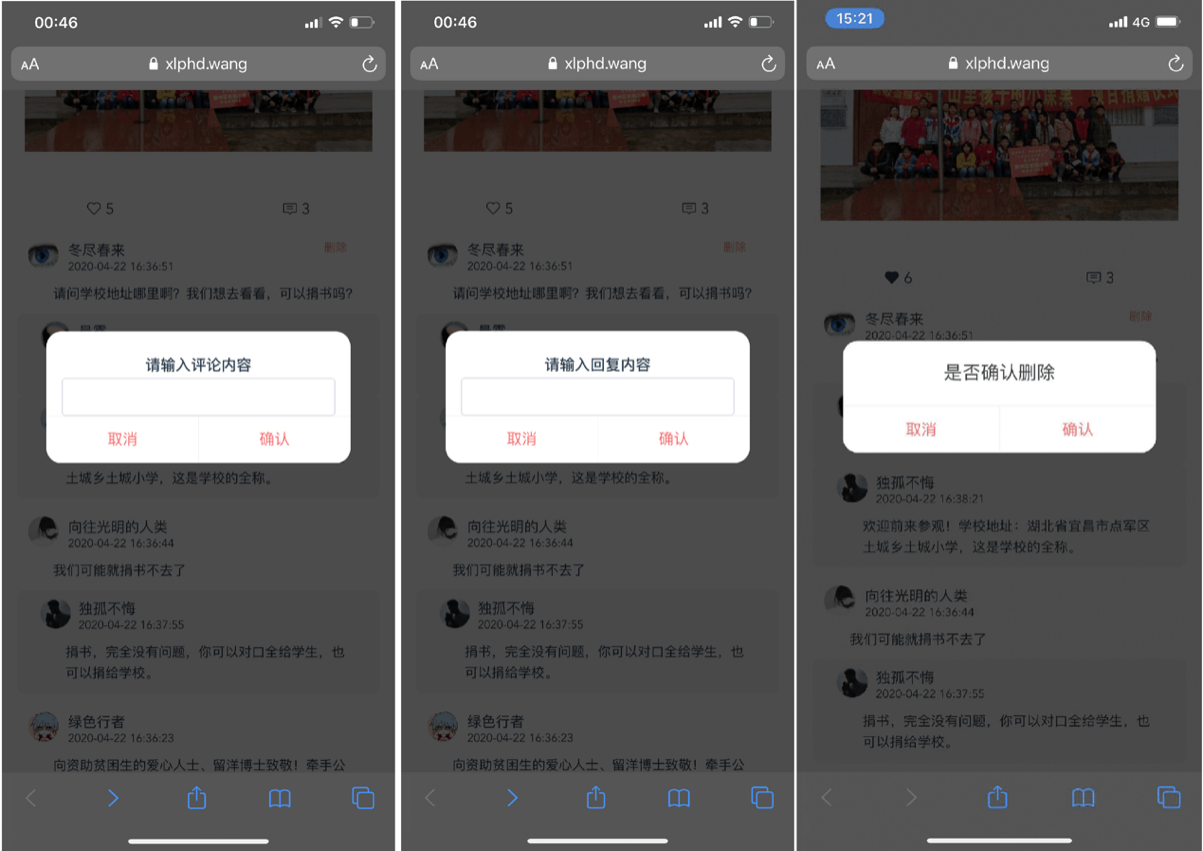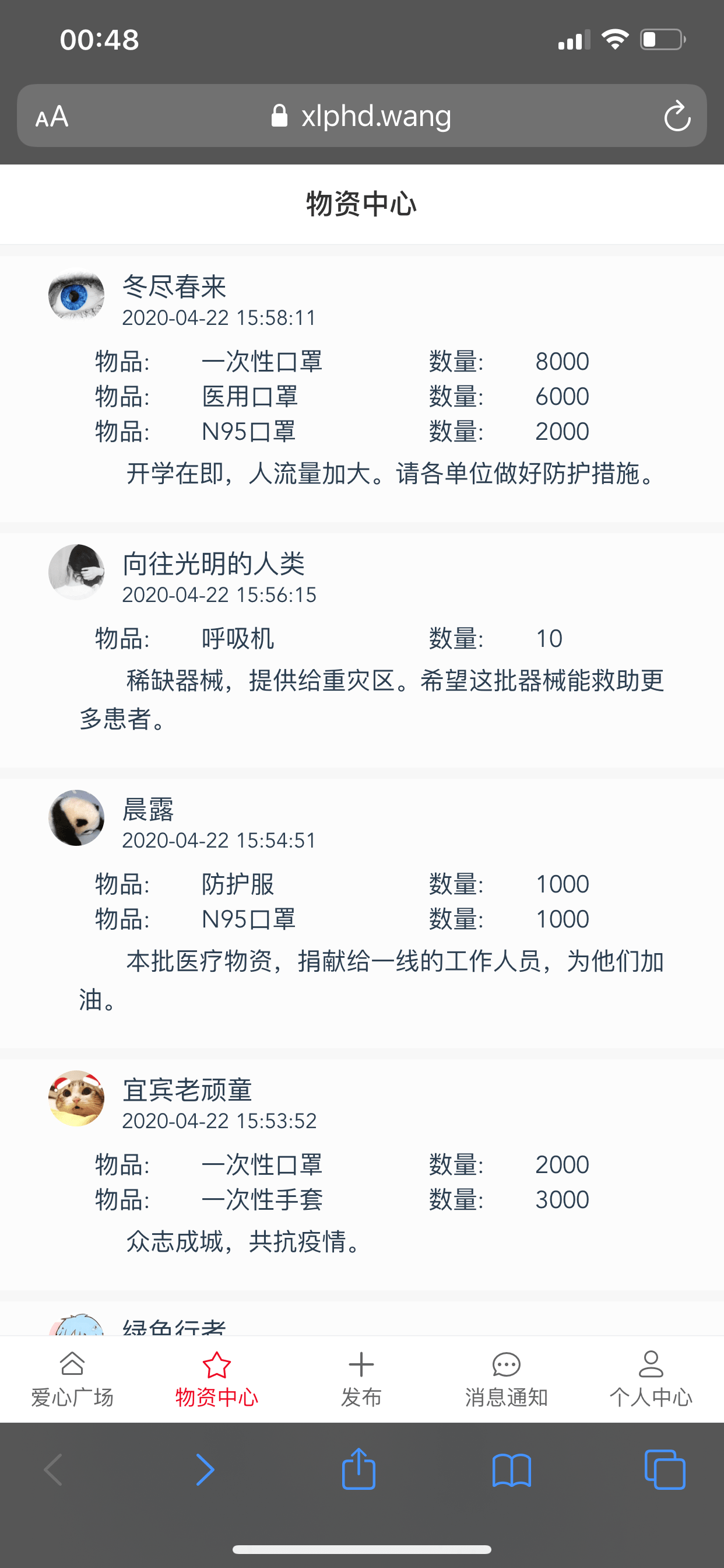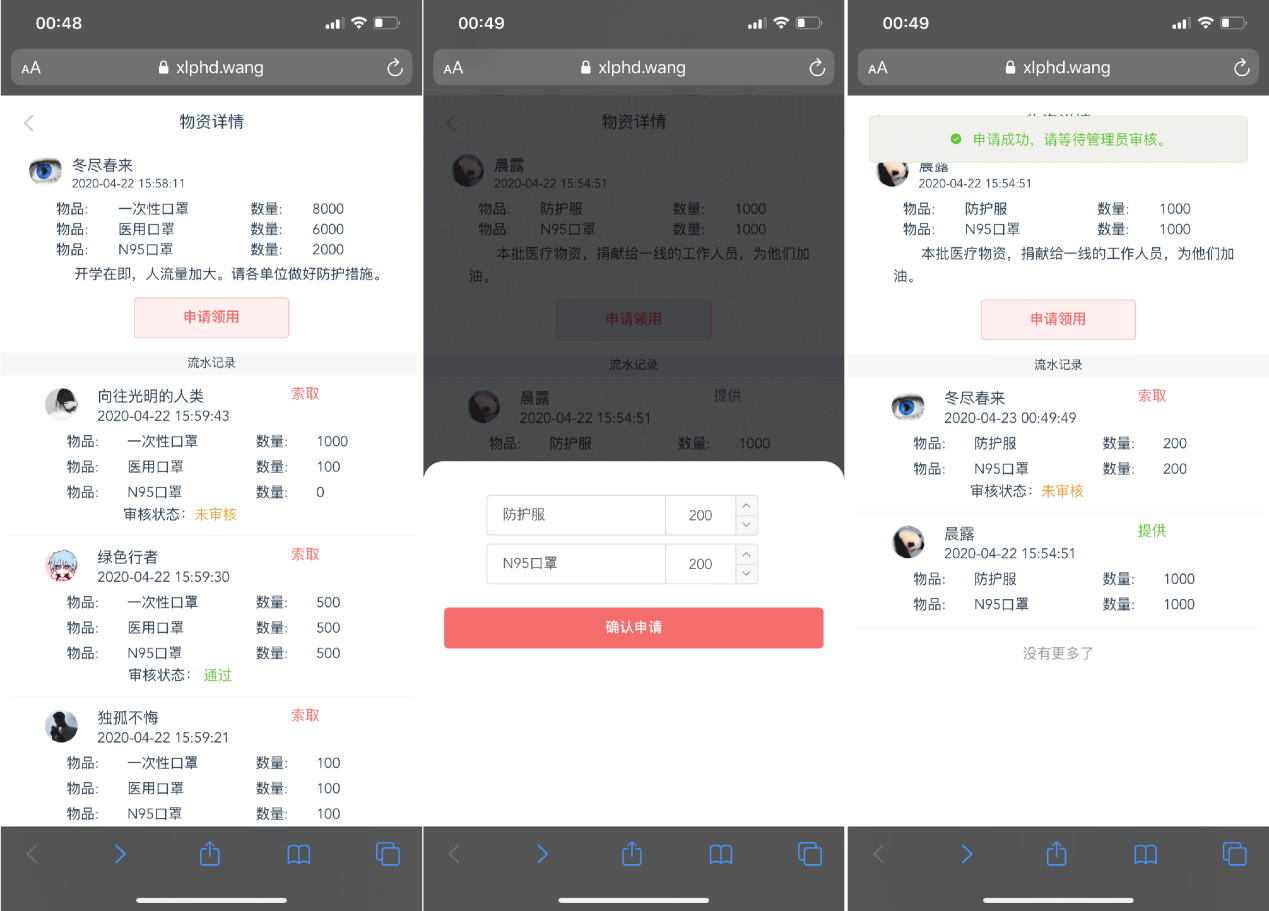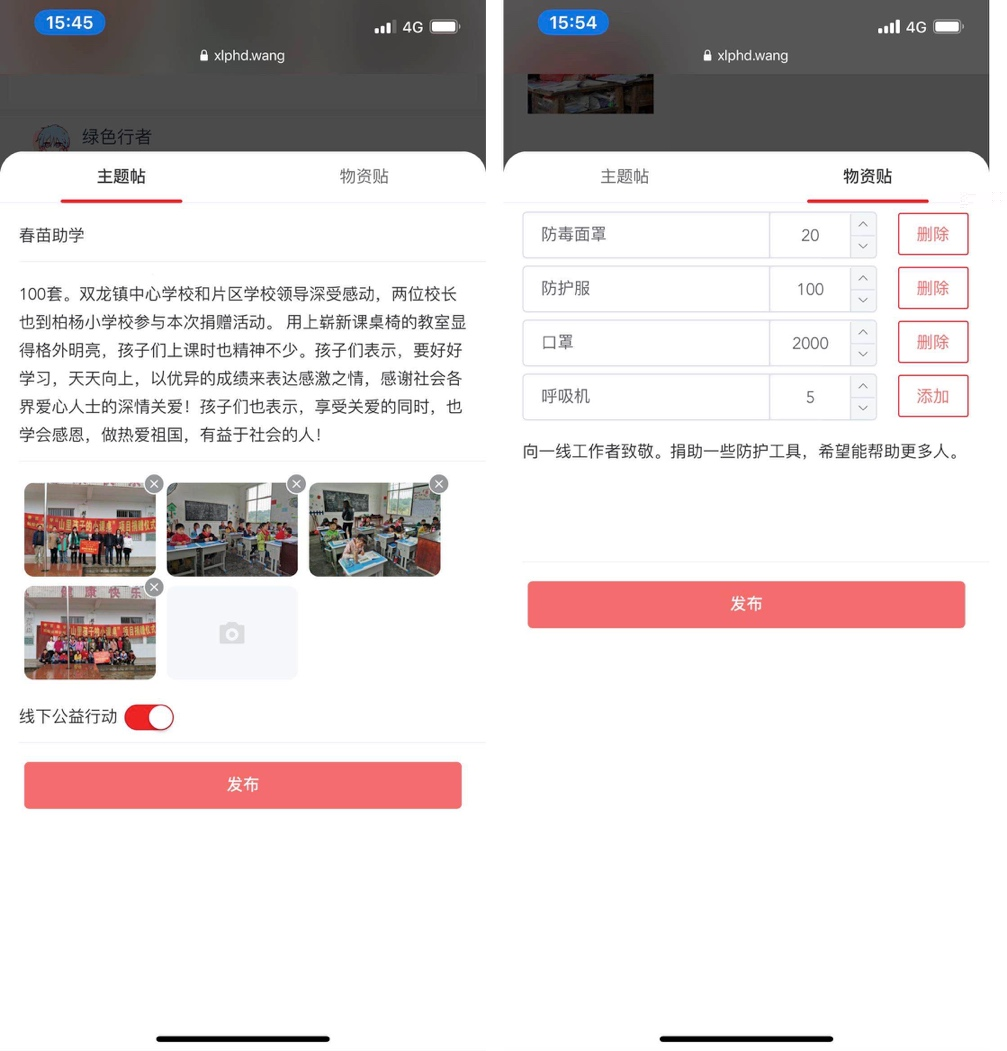摘 要
中国的公益行业资源整合能力较差,需要逐步增强。公益项目的资源整合能力可以让很多社会问题得到关注,同时获得更多的长期资源,并可持续的帮助社会问题的解决和改善。参与公益的方式不可再拘泥于传统,创新的公益传播方法,可以给公益带来的更多的可能性。
本文通过对公益的重要性,以及对线上公益模式优势的分析,设计出了一套基于浏览器的线上公益系统。利用当前较流行的技术和MVC开发模式进行开发,将数据存储在MySql数据库中。该系统实现了用户注册、登录、主题帖发布、评论互动、物资贴发布、物资申领、流水记录、证书颁发等功能。用户可以通过域名进入系统首页,浏览其他用户发布的主题帖、评论、物资贴等。通过手机号进行注册登录,登录后可参与主题帖的互动,包括点心、评论、加入线下公益行动等。可以在物资贴中浏览其他用户捐助的物资及物资分配的流水记录情况,并对需要的物资进行申请。用户也可以自己发布主题帖或者物资贴,发起主题讨论、线下行动或者捐助物资。参与线下公益行动或者发布物资捐助贴后,系统会生成证书,用户可以在个人中心查看自己获得的全部证书。系统还具有管理员管控功能,管理员可以对主题帖或评论及进行质量控制,能够修改主题帖的状态,也可以直接删除恶意贴子或者评论。另外,管理员还需要进行申领物资审核,决定申领物资的用户是否能得到帮助。
该系统有效解决了传统公益的覆盖范围小、活动形式单一、资源整合能力差等问题。实现公益模式从线下向线上转型,为全国各地的公益人或公益组织提供了一个集实时交流、活动策划、物资捐助等功能于一身的线上社区。系统暂命名‘明德公益’。
关键词:资源整合,MVC,社区,明德公益
ABSTRACT
China's public welfare industry has poor resource integration capabilities and needs to be gradually strengthened. The resource integration ability of public welfare projects can make many social problems get attention, at the same time get more long-term resources, and can help solve and improve social problems in a sustainable manner. The way of participating in public welfare can no longer be confined to tradition. Innovative public welfare communication methods can bring more possibilities to public welfare.
Based on the analysis of the importance of public welfare and the advantages of online public welfare model, this paper designs a browser-based online public welfare system. Using the current popular technology and MVC development mode to develop, the data is stored in MySql database. The system implements functions such as user registration, login, topic post release, comment interaction, material post release, material application, flow record, and certificate issuance. Users can enter the homepage of the system by domain name, and browse the topic posts, comments, material stickers, etc. posted by other users. Register and log in through your mobile phone number. After logging in, you can participate in the interaction of topic posts, including snacks, comments, and joining offline public welfare actions. You can browse materials donated by other users and the distribution records of materials distribution in the material stickers, and apply for the required materials. Users can also post topic posts or material stickers, initiate topic discussions, offline actions or donate materials. After participating in offline public welfare actions or posting material donation stickers, the system generates a certificate, and users can view all the certificates they have obtained in the personal center. The system also has an administrator control function. The administrator can perform quality control on topic posts or comments, modify the status of topic posts, or directly delete malicious posts or comments. In addition, the administrator also needs to review the application materials to decide whether the user who applies for materials can get help.
The system effectively solves the problems of small coverage of traditional public welfare, single form of activities, and poor resource integration capabilities. To realize the transformation of the public welfare model from offline to online, it provides an online community that integrates real-time communication, event planning, material donation and other functions for public welfare people or organizations across the country. The system is temporarily named ‘Middlebury Charity’.
KEY WORDS: Integration of resources, MVC, Community, Middlebury Charity’
目 录
第一章 前言 1
1.1 系统概述 1
1.1.1 课题开发背景及意义 1
1.1.2 软件概述 2
1.1.3 运行环境 3
1.1.4 用户类及其需求 3
1.2 具体需求 3
1.2.1 功能需求 3
1.2.2 性能需求 3
1.2.3 质量属性需求 4
1.2.4 设计和实现上的限制 4
1.3 本章小结 4
第二章 相关技术、工具及可行性分析 5
2.1 SpringBoot + Shiro + JWT 5
2.1.1 SpringBoot 5
2.1.2 Shiro 5
2.1.3 JWT 5
2.2 MySql + MyBatis 6
2.2.1 MySql 6
2.2.2 MyBatis 6
2.3 Redis 6
2.4 Vue.js + WebPack 6
2.4.1 Vue.js 6
2.4.2 WebPack 6
2.5 SublimText 7
2.6 Tomcat 7
2.7 可行性分析 7
2.7.1 研究设计中要解决的问题 7
2.7.2 技术可行性 8
2.7.3 经济可行性 8
2.7.4 操作可行性 8
2.8 本章小结 8
第三章 需求分析与系统设计 9
3.1 总体需求 9
3.2 业务流程需求 11
3.3 系统体系结构设计 12
3.4 系统功能结构设计 12
3.5 数据库设计 13
3.5.1 数据库需求分析 13
3.5.2 数据库概念结构设计 13
3.5.3 数据库逻辑结构设计 14
3.5.4 数据库的表结构 15
3.6 本章小结 19
第四章 系统实现 20
4.1 前端页面 20
4.1.1 首页 20
4.1.2 注册登录页 21
4.1.3 主题帖详情页 21
4.1.4 主题帖互动区 22
4.1.5 物资中心页 24
4.1.6 物资详情页 25
4.1.7 发布页 25
4.1.8 消息通知页 26
4.1.9 个人中心页 27
4.1.10 用户相关内容 28
4.1.11 用户个人信息修改 30
4.1.12 管理员页面 30
4.2 后端接口 31
4.2.1 用户相关接口 31
4.2.2 主题帖相关接口 31
4.2.3 实物贴相关接口 32
4.2.4 其余接口 33
4.3 本章小结 33
第五章 系统测试 34
5.1 测试目标 34
5.2 系统主要模块测试 34
5.2.1 用户模块 34
5.2.2 主题帖模块 35
5.2.3 互动模块 36
5.2.4 物资贴模块 37
5.2.5 消息通知模块 39
5.2.6 个人中心模块 39
5.2.7 管理员模块 40
5.3 本章小结 41
第六章 全文总结 42
参考文献 43
致 谢 45
毕业设计小结 46

